The Best Portable Power Sources for Backpacking
Find the Charge That's Right For You
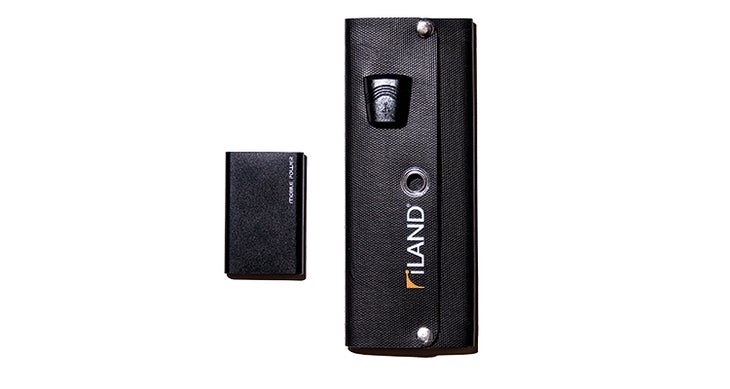
How it works: A 65-square-inch, flexible silicon solar panel charges a 2,100mAh battery. Pros:Super-light and slightly more durable than the Goal Zero Guide 10. Cons:Slower charge times; awkward in use (“The external battery dangles by the power cord when I have the solar panel lashed to my pack during charging,” says a tester.) (9 oz.; $140; iland-solar.us)
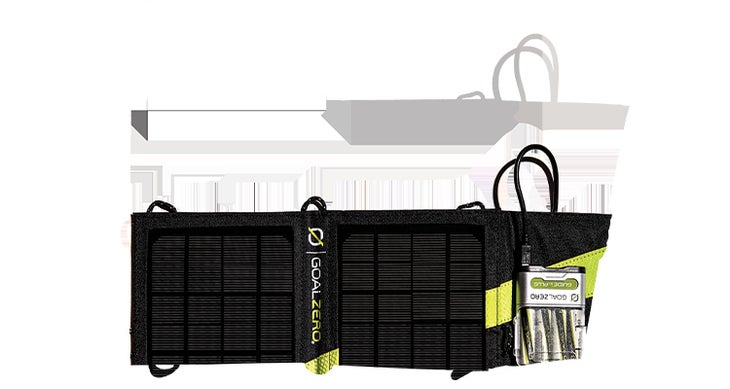
How it works: The stiff, 72-square inch panel charges four AAs (included), which are housed in a USB-compatible battery pack. Capacity: 2,300mAh. Pros: Charging efficiency and AA versatility: “With the batteries, we could charge anything in sight, even a weather radio and a light-up Frisbee.” Cons: Heavy. (1 lb. 4 oz.; $130;goalzero.com)
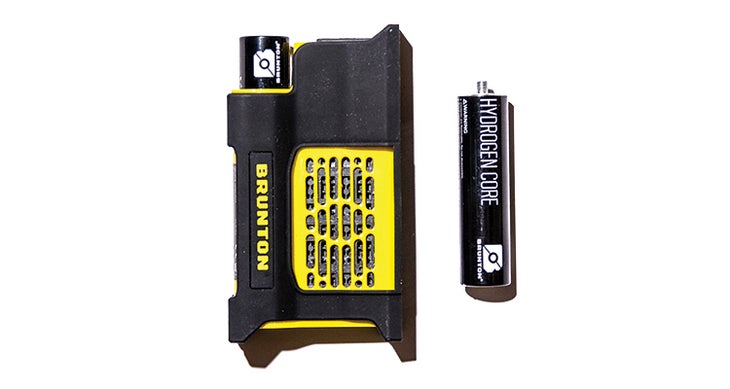
How it works: Insert the 3.5-inch, cigar-shaped hydrogen “core,” wait a few seconds for the green light, and plug your device into the USB port (there is no on board battery for power storage).Pros: Works any time, in any conditions, as long as oxygen can flow freely around the unit. “I charged my phone on the go in the mesh side pocket of my pack,” says a tester.Cons: Pricey; no way to know how much charge is left in a partially used core. (10 oz./2.8 oz. per core (refillable at select locations for $3-$7); $170/$20 per core; brunton.com)

How it works: Insert a fuel puck and add a half-ounce of water to the reservoir. A chemical reaction creates energy, which gets stored in the on board 1,500 mAh battery.Pros: A slightly more affordable chemical charging solution; pucks are recyclable (but not reusable. Cons: Testers felt it was “finicky.” The PowerTrekk must be level, still, and exposed to oxygen while running; more moving parts mean it’s less rugged than the Brunton. (10 oz/4 oz per puck; $150/$4 per puck; powertrekk.com)
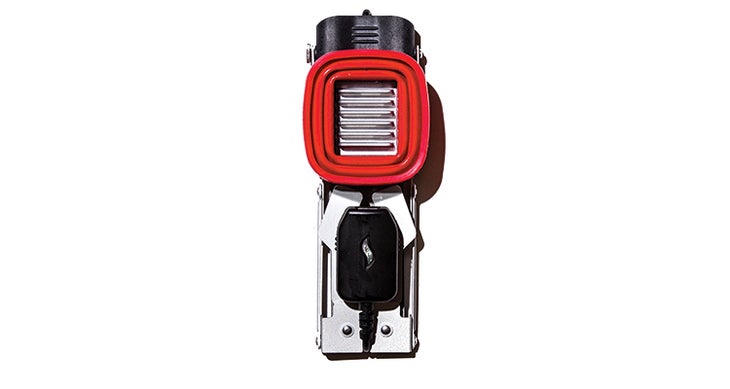
How it works: A metal blade rests in a fire or stove’s flame and transfers heat to a thermoelectric regulator. Put cold water in the reservoir and the temperature difference makes power.Pros: This system works with most stoves (not ideal with models that have integrated windscreens). No new parts or special cookware are necessary.Cons: Don’t expect a full charge unless you plan a long night by the campfire. (10 oz; $90; flamestower.com)
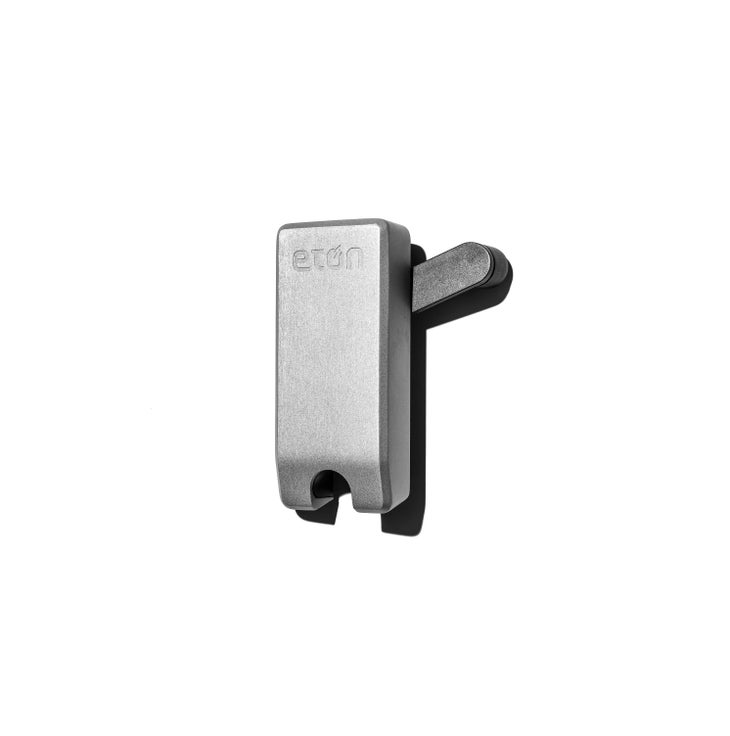
How it works: Turning the crank produces electricity that’s stored in a 2,000 mAh battery.Pros: “It’s infallible! The most dependable power source is me.” Cons: Strong arms and stamina required! Got kids? Recruit them to do some of the cranking. (8 oz.; $80; etoncorp.com)
We’re unabashed gadget lovers–for navigation, photography, video, music, camp reading, and more—but all devices become dead weight (literally) without juice. Luckily, there are more ways than ever to recharge off the grid. How to choose? If you can count on sunshine and will be out for a long time, go with solar. If not, and price is not a deal breaker, consider chemical chargers. Plan to do lots of cooking or campfire lounging? Check out thermal devices. And if your budget is tight, mechanical is for you.
iLAND FLY with Battery Pack

How it works: A 65-square-inch,flexible silicon solar panel charges a 2,10 mAh battery. (Battery capacity is measured in milliamphere hour, or mAh. Higher numbers mean more power but also more weight and bulk.)
Pros: Super-light and slightly more durable than the Goal Zero Guide 10
Cons: Slower charge times; awkward in use (“The external battery dangles by the power cord when I have the solar panel lashed to my pack during charging,” says a tester.)
Charge Time: Full sun: 9 hours; Partly cloudy: 11 hours
# of iPhone Charges: 1.1
Specs: 9 oz.; $140; iland-solar.us
Goal Zero Guide 10 Plus Solar Kit

How it works: The stiff, 72-square inch panel charges four AAs (included), which are housed in a USB-compatible battery pack. Capacity: 2,300mAh
Pros: Charging efficiency and AA versatility: “With the batteries, we could charge anything in sight, even a weather radio and a light-up Frisbee.”
Cons: Heavy
Charge Time: Full sun: 5 hours; Mostly cloudy: 10 hours
# of iPhone Charges: 1.3
Specs: 1 lb. 4 oz.; $130;goalzero.com
Brunton Hydrogen Reactor

How it works: Insert the 3.5-inch, cigar-shaped hydrogen “core,” wait a few seconds for the green light, and plug your device into the USB port (there is no on board battery for power storage).
Pros: Works any time, in any conditions, as long as oxygen can flow freely around the unit. “I charged my phone on the go in the mesh side pocket of my pack,” says a tester.
Cons: Pricey; no way to know how much charge is left in a partially used core
Charge Time: no on board battery
# of iPhone Charge: One core nets about 2 charges
Specs: 10 oz./2.8 oz. per core (refillable at select locations for $3-$7); $170/$20 per core; brunton.com
MyFC PowerTrekk

How it works: Insert a fuel puck and add a half-ounce of water to the reservoir. A chemical reaction creates energy, which gets stored in the on board 1,500 mAh battery.
Pros: A slightly more affordable chemical charging solution; pucks are recyclable (but not reusable)
Cons: Testers felt it was “finicky.” The PowerTrekk must be level, still, and exposed to oxygen while running; more
moving parts mean it’s less rugged than the Brunton.
Charge Time:3 hours
# of iPhone Charges: One puck nets about a 60% charge
Specs: 10 oz/4 oz per puck; $150/$4 per puck; powertrekk.com
FlameStower

How it works: A metal blade rests in a fire or stove’s flame and transfers heat to a thermoelectric regulator. Put cold water in the reservoir and the temperature difference makes power.
Pros: This system works with most stoves (not ideal with models that have integrated windscreens). No new parts or special cookware are necessary.
Cons: Don’t expect a full charge unless you plan a long night by the campfire.
Charge Time: no on-board battery
# of iPhone Charges: 1.5 hours of cooking netted a 30% boost
Specs: 10 oz; $90; flamestower.com
Eton Turbine 2000

How it works: Turning the crank produces electricity that’s stored in a 2,000 mAh battery.
Pros: “It’s infallible! The most dependable power source is me.”
Cons: Strong arms and stamina required! Got kids? Recruit them to do some of the cranking.
Charge Time: 2 hours of cranking nets a 75% charge
# of iPhone Charges: A full battery provides 1 full charge
Specs: 8 oz.; $80; etoncorp.com